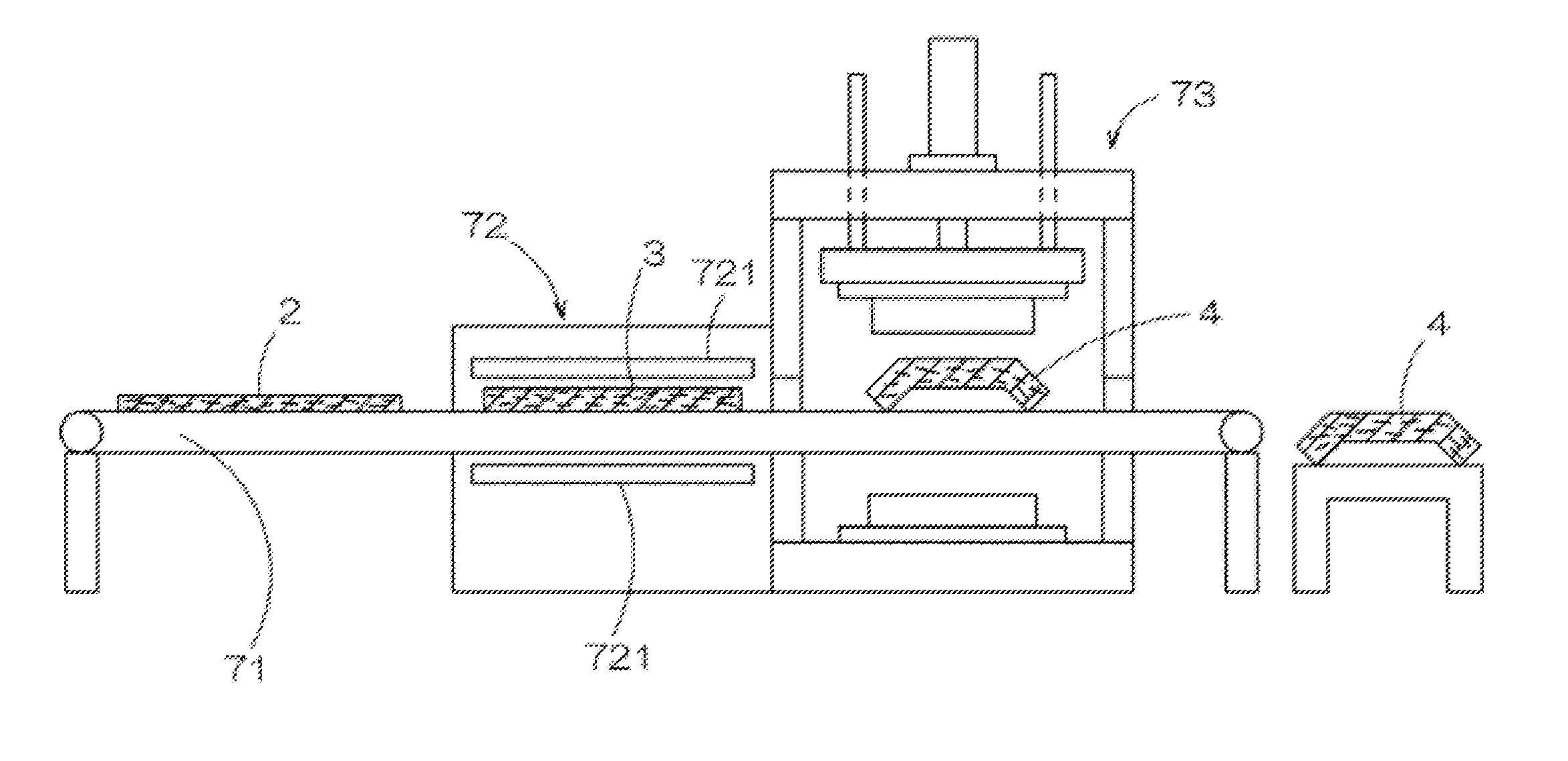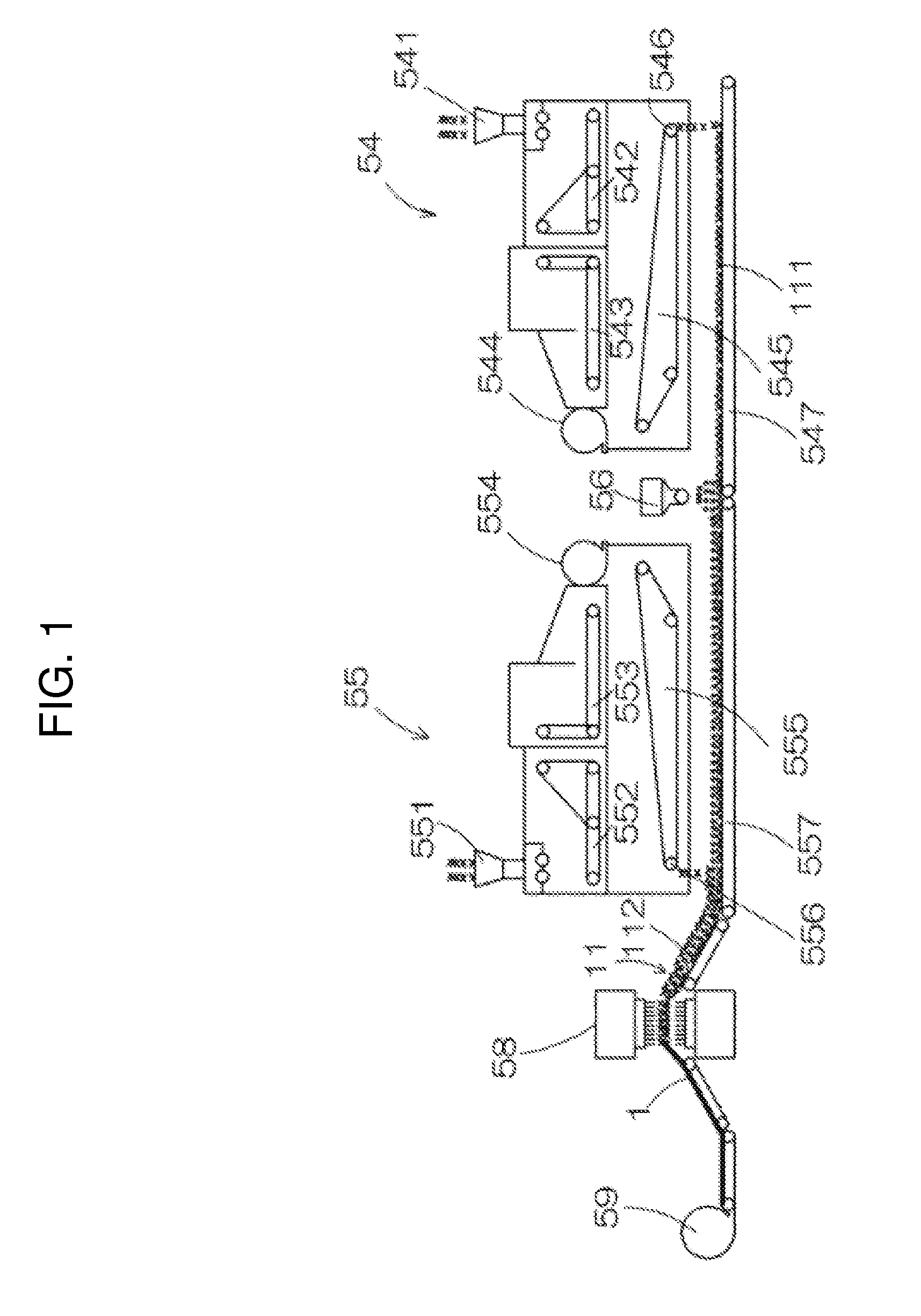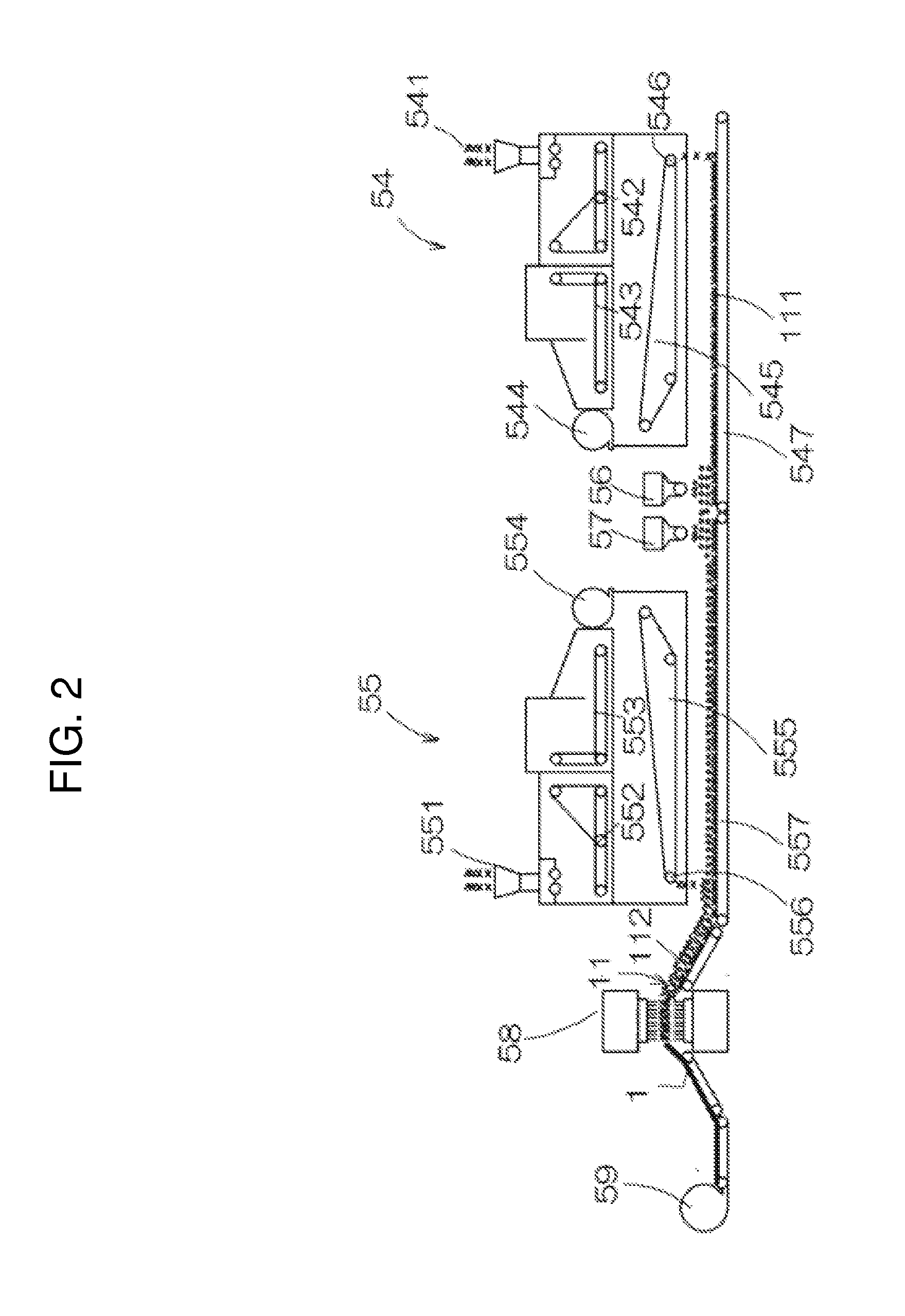Method for manufacturing thermally expandable base material for vehicle interior and method for manufacturing base material for vehicle interior using same
a technology for vehicle interiors and base materials, which is applied in the direction of transportation and packaging, other domestic articles, and bands. it can solve the problems of not meeting the recent demand for vehicle weight reduction and the requirement of high base weight of base materials
- Summary
- Abstract
- Description
- Claims
- Application Information
AI Technical Summary
Benefits of technology
Problems solved by technology
Method used
Image
Examples
example 1
Production of Thermally Expandable Base Material for Vehicle Interior Using Thermoplastic Resin Fiber
(1) Fabrication of Fiber Mat
[0062]A glass fiber wound in the form of a continuous roving was cut into pieces of a specified length, and 50% by mass of the glass fiber pieces and 50% by mass of polypropylene resin fibers (the total of them was taken as 100% by mass) were fed to a hopper 511 of a first opener 51, unfolded therein, and fed from a switching damper 517 to a reserve box 521 of the first opener 52 and a reserve box 531 of a second opener 53. They were unfolded again (see FIG. 3), fed to the reserve box 541 of a first web forming machine 54 and a reserve box 551 of a second web forming machine 55, respectively, and further unfolded therein (see FIG. 1).
[0063]After that, the mixed fibers further unfolded in the first web forming machine 54 were fed onto a screw conveyor 545 using a cylinder blower 544, conveyed using the conveyor, and fed onto the front conveyor 547 from a ga...
example 2
Production of Thermally Expandable Base Material for Vehicle Interior Using Thermoplastic Resin Powder
[0065]A glass fiber used in Example 1 was fed to a hopper 511 of a first opener 51, unfolded therein, and fed from a switching damper 517 to a reserve box 521 of the first opener 52 and a reserve box 531 of a second opener 53. They were unfolded again (see FIG. 3), fed to the reserve box 541 of a first web forming machine 54 and a reserve box 551 of a second web forming machine 55, respectively, and further unfolded therein. Then, a first web 111 was formed in the same manner as that in Example 1. Subsequently, a thermally expandable microcapsule was distributed using a capsule distributor 56 over the first web 111. Additionally, a polypropylene resin powder was distributed using a resin powder distributor 57 over the first web 111. The mass ratio of the glass fiber to the polypropylene resin powder was the same as the mass ratio of the glass fiber to the polypropylene resin fiber i...
example 3
Production of Base Material for Vehicle Interior
[0067]The thermally expandable base material 2 for vehicle interior cut into pieces of a specified length after the production by Example 1 was allowed to stand in a heating chamber 72 heated at a temperature of 230° C. for 90 seconds. The thermally expandable base material 2 for vehicle interior was heated so as to have a surface temperature of 195° C. higher than the thermal expansion starting temperature of the thermally expandable microcapsule by 17° C. to thermally expand the thermally expandable microcapsule and produce a base material 3 for vehicle interior. After that, the base material 3 was molded while being cooled using a compression molding machine 73 in which a clearance was 8 mm between the cooling plates that were cooled to a temperature of 18° C. by passing water through the inside of the cooling plates, thereby producing a vehicle interior material 4 having a thickness of 8 mm (see FIG. 5).
[0068]According to the one a...
PUM
| Property | Measurement | Unit |
|---|---|---|
| Temperature | aaaaa | aaaaa |
| Temperature | aaaaa | aaaaa |
| Fraction | aaaaa | aaaaa |
Abstract
Description
Claims
Application Information
 Login to View More
Login to View More - R&D
- Intellectual Property
- Life Sciences
- Materials
- Tech Scout
- Unparalleled Data Quality
- Higher Quality Content
- 60% Fewer Hallucinations
Browse by: Latest US Patents, China's latest patents, Technical Efficacy Thesaurus, Application Domain, Technology Topic, Popular Technical Reports.
© 2025 PatSnap. All rights reserved.Legal|Privacy policy|Modern Slavery Act Transparency Statement|Sitemap|About US| Contact US: help@patsnap.com



